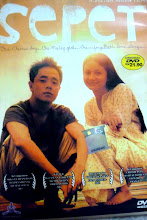When Mahathir became the prime minister in the early 1980s, he went on a privatisation frenzy. Perhaps he was thinking of Margaret Thatcher.
Unfortunately for Malaysia, Mahathir was no Thatcher.
How much privatisation has cost the country is anyone's guess. Just the Mas case may give us an inkling.
When the privatisation frenzy was first on, we were told that it would benefit the country. For example, the government's hand would be more free (to do what?). Costs would go down and efficiency improved.
All this we know today is just hot air. Many say, for example, that refuge collection was more efficient when the local councils themselves were doing the job.
And instead of the government having to employ fewer people, the number of civil servants has bloated to more than a million, perhaps one of the highest in the world for a population of only some 28 million.
Privatisation in Malaysia is more akin to what former opposition leader Lim Kit Siang often described as "piratisation" that is to say, profits are privatised and losses are borne by the public like in the Mas bailout.
Today, almost anything is fair game when it comes to privatisation.
Now, it seems that traffic summons are also fair game.
While the authorities are at it, why doesn't the Najib administration also privatise the judiciary (the public's confidence in the Malaysian judiciary is at an all time low), the police force (no better here), the AG's department (well, what to say), MACC (the anti-corruption body is more like a death trap with the unexplained deaths of two suspects who had been in their custody and who, it was alleged, jumped to their own deaths) and the Malaysian Election Commission (some say it is more interested in perpetuating the Barsian government than in ensuring that the electoral roll and process are fair and clean).
Better still, Najib should privatise his administration so that he and his company can jet-set the world in style and maybe retire in Timbuktu.
And jesters Hassan and Ibrahim Ali can run the show demonising the Christians and stirring up racial discord and the country can live happily thereafter.
Subscribe to:
Post Comments (Atom)
Kamini's Indian Wedding - Click To Visit
Yasmin Ahmad - Click To Visit

Yasmin Ahmad was arguably Malaysia's best story-teller, filmmaker and advertiser. She was well known for her Petronas commercials and had won numerous international awards including the Golden Lion award for the 'Tan Ming Hong In Love' commercial. Her feature film Sepet not only garnered her several international awards including for Best Asian Film but also drew multi-racial audiences that rarely happens for a local film.
Batu Caves - Click To Visit
Petronas Twin Towers And KLCC Park - Click To Visit
Some Early Morning Views Of KL City Skyline - Click To Visit
Kluang Town - Click To Visit
Kluang RailCoffee
The Kluang railway station coffee shop, now re-branded Kluang RailCoffee, is well known for its cuppa of coffee and the charcaol grilled piping hot buns oozing with butter and kaya...It used to attract standing-room only crowds. It still does, but the last time I was there it wasn't a good experience for me. The famous coffee had somewhat lost its oomph and even the buns...The shop has a long and noted history being first opened for business in 1938 and the place is now run by the 3rd generation LIm family. I hope the next time I return, the coffee would regain its oomph. Click to read more...



No comments:
Post a Comment